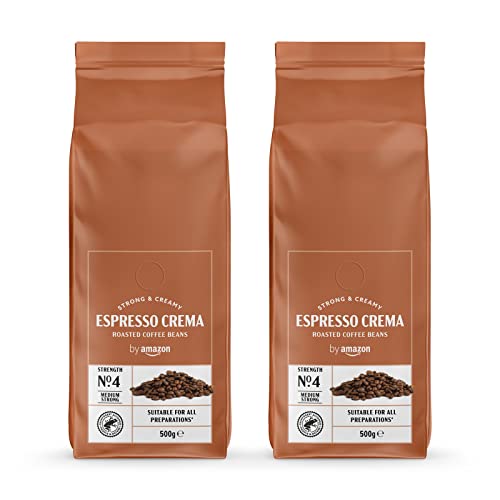Types of Coffee Beans
Behind every cup of coffee we drink, there are carefully graded beans. These beans are graded based on size, color and shape.
The AA grade is awarded to coffee beans that satisfy all of the above requirements, except they cannot have more than three deficient quality (quakers). These are usually Kenya AA beans.
Arabica
Arabica coffee beans are also referred to as Coffea Arabicica and are the most sought-after coffee beans in the world. The legend says that coffee was discovered in Ethiopia when goat herders noticed their herd swaying with more energy after eating the fruit of the coffee plant. This led him to try roasting and brewing the seeds, creating the drink we all know and cherish today.

Although a variety of coffee plants are available but there are only two major species used to create the basis for all our favorite beverages: robusta and arabica. The former is generally thought superior to the other, and this is evident in the flavor of the final beverage.
There are a number of different cultivars of arabica, with each one possessing its own unique flavor profile. Two of the most well-known varieties are Typica and Bourbon and from which all other varieties of arabica have been developed, through natural mutation or intentional crossbreeding. The SL28 cultivar, for example was developed in Kenya by Scott Labs and is known for its distinctive chocolate taste.
The flavor of an arabica variety varies on the conditions in the conditions it was cultivated, as well as the method by which it was handled and roasted. For instance, the type of shade a plant receives, its altitude and soil composition can all play a significant impact on the final product.
Robusta
Robusta coffee beans, also known as coffee canephora are the second most popular variety of coffee beans. They are utilized in the majority of instant coffees and have twice the amount of caffeine as Arabica Coffee Beans. They are also used in numerous espresso blends, particularly for cappuccino and caffe latte.
Coffea Canephora is a plant which was discovered in Sub-Saharan Africa. specialty coffee beans has been cultivated across the world since. It can be grown at lower elevations and can withstand higher temperatures than Arabica coffee plants, making it a better choice for farmers. Vietnam is the world's largest producer of robusta followed by Brazil and Indonesia.
The robusta plant is a great coffee, but it's not popular with cupping enthusiasts because of its bitter taste and burnt-rubber hints. It's generally regarded as a poorer quality coffee, and a majority of the major coffee companies use arabica beans for their top quality products.
The demand for premium coffees is increasing and small roasters are trying to make the most of its exceptional qualities. Our Valhalla Java coffee and Death With Coffee coffee are two examples. Both are exceptional robustas that blend with arabica to create the perfect balance between strength and flavour. These coffees are obtained from Uganda where robusta is cultivated for centuries. You can read more about them here.
Liberica
Liberica coffee beans are rare and are not used in the globe. They are less than 2% the world's consumption of coffee beans, and are often overlooked as they do not contain the same amount of caffeine. These beans have a unique flavor that a lot of coffee drinkers find appealing.
Liberica coffee beans, though extremely scarce and extremely scarce, are still quite well-loved in a few parts of Asia. They are particularly popular in Malaysia and Indonesia as they have significant Muslim population. In these countries the coffee industry has been strong for many years. Drinking a cup coffee after a prayer is an integral part of their tradition.
Liberica coffee's roots go back to the 1890s which was the time when a global epidemic caused by rust on the coffee leaf decimated the arabica crop. This event spurred the coffee industry to seek out a more resilient species that could thrive in tropical climates, and they quickly discovered the Liberica plant.
Liberica plants are resistant to disease and pests which makes them the perfect replacement for the destroyed arabica crop. Liberica also has the capacity to grow in hot temperatures and lower altitudes. This allowed it to flourish in the climate of Southeast Asia. Liberica beans are the basis for the majority of the coffee in the Philippines and Indonesia.
Excelsa
Although it's not common for coffee drinkers to find excelsa beans, they are beginning to gain a reputation for having a unique flavor. According to Komal Sable of South India Coffee Co. who is a fifth-generation farmer of coffee These beans have a teardrop-like shape, but are much smaller. But despite the family resemblance, it's important to note that excelsa is technically not a distinct species.
It's not clear how to classify excelsa beans. This confusion is largely reason for the insufficient their presence in the modern world of coffee. Many roasters, growers, and brewers don't know how to properly cultivate and use these beans.
Ultimately, it's up for the individual to decide what they prefer about the taste of the coffee excelsa and it may take a little time to find a blend that matches their tastes. It's important to be open-minded and try different kinds of coffee until you discover the one that you like. You'll be able to explore the vast array of possibilities the unique beans have to offer. It's a trip worth the effort.
